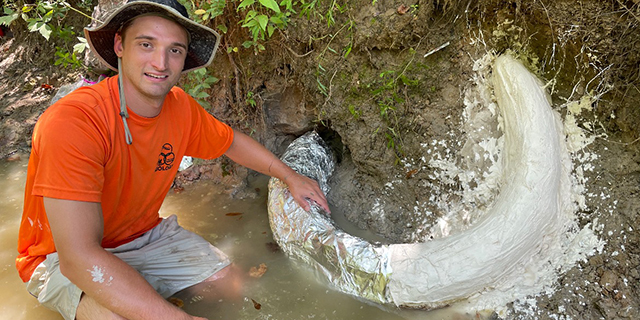Fossil collector unearths from Mississippi mud 600 pound rare mammoth tusk
Published 1:59 pm Wednesday, August 14, 2024
Earlier this week, scientists from the Mississippi State Geological Survey were alerted to a significant fossil discovery by Eddie Templeton, a dedicated fossil collector. While exploring rural Madison County, Templeton found what appeared to be a portion of an ice-age elephant tusk embedded in a steep embankment.
Mississippi was home to three types of Proboscideans during the last ice age: Mastodons, Gomphotheres, and Columbian mammoths, all of which had ivory tusks. Mastodon fossils are the most commonly found in the state. However, based on the strong curvature of the tusk, experts suspected this find to be from a Columbian mammoth, a much rarer discovery in Mississippi.
Recognizing the importance of preserving the fossil, Templeton quickly contacted the Geological Survey team, who, along with the Mississippi Museum of Natural Science, responded to the site. The tusk, which was partially exposed above water under a bluff, was found to be in remarkable condition, measuring an impressive 7 feet long.
The team carefully excavated the tusk, revealing it intact—a rarity in Mississippi, where most tusk finds are fragmentary and typically from mastodons. After documenting the tusk in situ, they encased it in a protective plaster jacket for safe transport.
The fossil, which weighed around 600 pounds, was then moved to the Mississippi Museum of Natural Science for further study. Confirmed as a Columbian mammoth tusk, this discovery sheds light on the ice-age ecosystems of central Mississippi, where these massive mammals once roamed. The find provides valuable insights into the region’s ancient environment, which was home to a diverse range of now-extinct animals, including horses, bison, and predators like saber-toothed cats and dire wolves.





